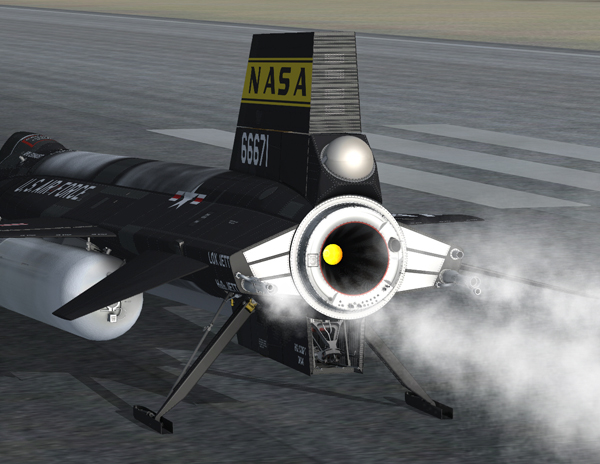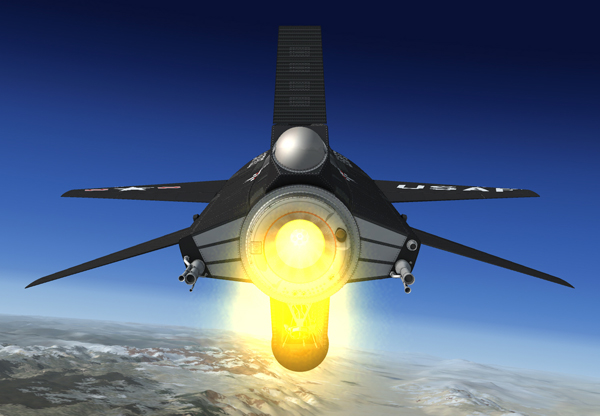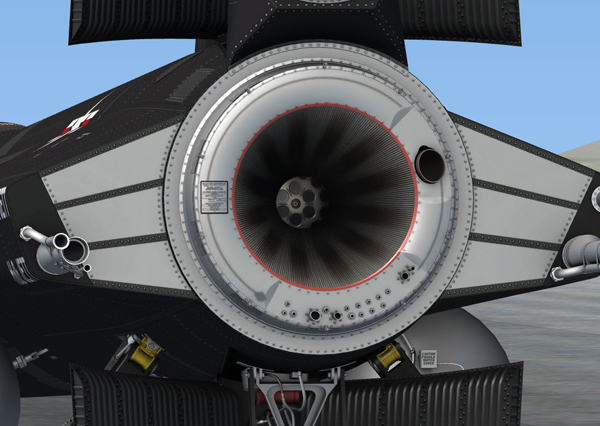The Reaction Motors XLR-99 is a "throttable" 60,000-pound liquid-fuel turborocket engine.
It has a single thrust chamber, a two-stage, continuous igniter starting system, a turbopump, and a gas generator. Propellants are liquid oxygen and anhydrous (waterless) ammonia, supplied from the airplane propellant system. The engine is of variable-thrust design, capable of operating over the range of 50 to 100 percent of full rated thrust.
The gas generator decomposes a monopropellant fuel, 90 percent hydrogen peroxide (H202), to provide a high-pressure gas mixture for driving the turbopump, which in turn drives the two centrifugal pumps that supply the propellants to the engine. Upon discharge from the pumps, the propellants are delivered to the two igniters and the thrust chamber where they are burned.

First stage ignition.
At the first-stage igniter, the oxygen (in gaseous form) and ammonia are mixed and then ignited by three spark plugs. Liquid oxygen and ammonia, meanwhile, also are routed to the second-stage igniter. When the pressure created by the hot gases in the first-stage igniter actuates a pressure switch, propellants are allowed to enter the second stage igniter. Here, the propellants are mixed and ignited by the incoming first-stage gases at greatly increased pressure.
(Did you know? The XLR-99 engine's second-stage ignition phase by itself produced 1500 pounds of thrust on the real aircraft.)

Second stage ignition.
When a pressure switch in the second-stage igniter is actuated, propellants are allowed to enter the thrust chamber itself. They are again mixed and ignited by the gases coming from the second stage igniter and build to the tremendous pressures needed for required thrust.

Main chamber ignition.
The thrust chamber is an assembly of small welded, wire-wound tubes preformed as segments of the chamber. Before injection into the thrust chamber, the ammonia passes through these tubes to cool the chamber. Exhaust gases are discharged through a venturi-shaped sonic nozzle.

A closer view of the XLR-99 engine on the X-15A-2 SE. Note the injectors and the wire-wound cooling tubes inside the nozzle.
The engine purge system is automatic in operation and uses gaseous helium. It has three functions:
During each purge cycle, the engine malfunction system checks the purge system through the combined action of a purge venturi and a purge pressure switch. If the pressure switch indicates an unsatisfactory purge, the engine will not start.
All manual shutdowns are followed automatically by a 5-second purge. However, if an automatic shutdown occurs, because of an engine malfunction or propellant exhaustion, a 20-second purge occurs.